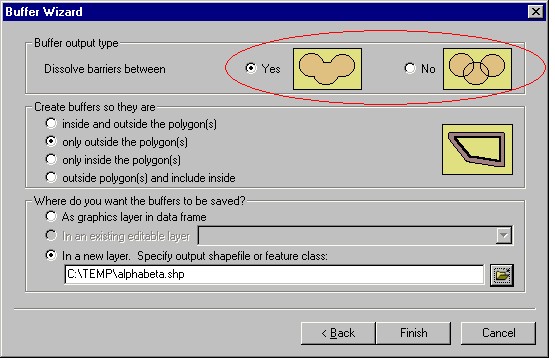

Make sure your rename the buffer to indicate it's the buffer for Charleston. Then go to Geoprocessing -> Buffer, and complete the form like we did above but with 150 feet for the distance. Go to the newly created layer, click on the layer's name, then press the F2 button to rename the layer " SewerMains_C_Charleston" Step 4: create the buffer from the new layer Right-click on the Sewer Mains layer -> Selection -> Create Layer from Selected FeaturesĬlear the selection by going to the main top-level menu, clicking on Selection -> Clear Selected Features. Step 3: create a new layer from the selected lines. The selected lines will appear highlighted in light blue.

If needed, choose Select by Rectangle from the drop-down menu.Ĭlick and drag a rectangular selection over the sewer line adjacent to Charleston Blvd. Step 2:select the desired area for buffering.Ĭlick on the select features button to turn it on. Right click on the Sewer Manhole layer, then Selection -> Make this the only selectable layer Step 1: create a separate layer for sewer main adjacent to Charleston Blvd.
Buffer arcmap how to#
In this part, you'll learn how to separate parts of a layer into sub-layers, and then create a different buffer for each sub-layer.įor this hypothetical project, we will create a buffer of 150 ft around the main sewer lines that are adjacent to Charleston Blvd and a buffer of 50 ft around the main sewer lines adjacent to Oakey Blvd. In some instances, you will have a single layer with different buffer requirements. The blue round shapes are the buffer areas around the sewer mains. Make sure that E nd Type is set to round and that Dissolve Type is set to AllĪfter a few moments of processing, a new layer will be added to your map.Distance : type the number of units needed for the buffer (in this example we use 200), and select the type of unit (feet) from the drop-down menu.I add "_buffer" to my buffered layers for easy finding. Output Feature Class: navigate to the folder in which you save all your work and name the new buffer layer.Input Features: that's the layer that needs the buffer.In the buffer window input the following: We'll first start with creating a buffer zone for all elements within a layer. We assume that, in our hypothetical project, a buffer was put as a constraint on the project to prevent any ground drilling from damaging the mains this means that we would have to mark the buffer on our map so that we know the area to avoid. protect resources or biodiversity in a protected natural area.



 0 kommentar(er)
0 kommentar(er)
